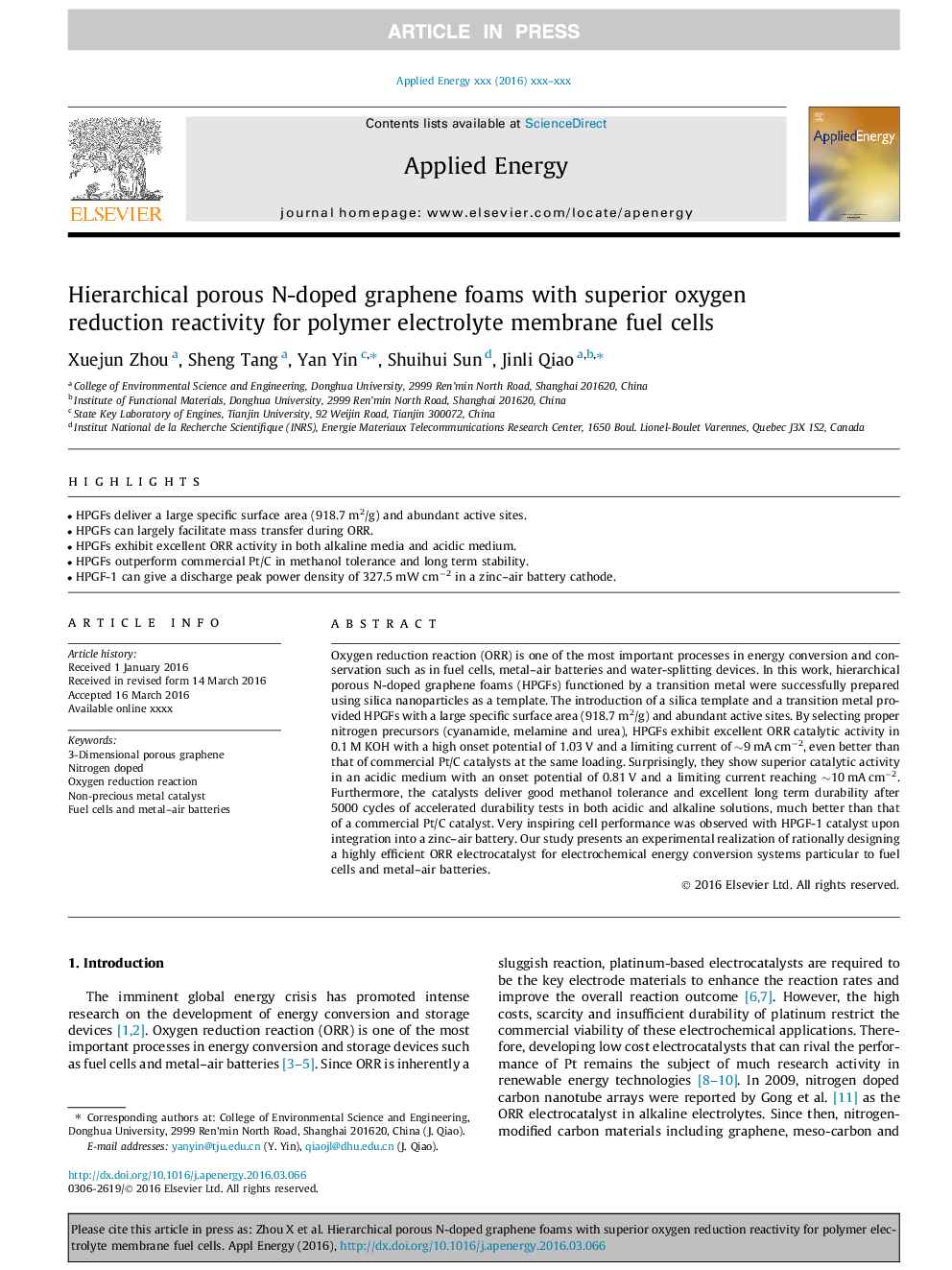| Article ID | Journal | Published Year | Pages | File Type |
|---|---|---|---|---|
| 6683039 | Applied Energy | 2016 | 9 Pages |
Abstract
Oxygen reduction reaction (ORR) is one of the most important processes in energy conversion and conservation such as in fuel cells, metal-air batteries and water-splitting devices. In this work, hierarchical porous N-doped graphene foams (HPGFs) functioned by a transition metal were successfully prepared using silica nanoparticles as a template. The introduction of a silica template and a transition metal provided HPGFs with a large specific surface area (918.7Â m2/g) and abundant active sites. By selecting proper nitrogen precursors (cyanamide, melamine and urea), HPGFs exhibit excellent ORR catalytic activity in 0.1Â M KOH with a high onset potential of 1.03Â V and a limiting current of â¼9Â mAÂ cmâ2, even better than that of commercial Pt/C catalysts at the same loading. Surprisingly, they show superior catalytic activity in an acidic medium with an onset potential of 0.81Â V and a limiting current reaching â¼10Â mAÂ cmâ2. Furthermore, the catalysts deliver good methanol tolerance and excellent long term durability after 5000 cycles of accelerated durability tests in both acidic and alkaline solutions, much better than that of a commercial Pt/C catalyst. Very inspiring cell performance was observed with HPGF-1 catalyst upon integration into a zinc-air battery. Our study presents an experimental realization of rationally designing a highly efficient ORR electrocatalyst for electrochemical energy conversion systems particular to fuel cells and metal-air batteries.
Related Topics
Physical Sciences and Engineering
Energy
Energy Engineering and Power Technology
Authors
Xuejun Zhou, Sheng Tang, Yan Yin, Shuihui Sun, Jinli Qiao,
